Pittville Pump Room
AN HISTORICAL GUIDE TO CHELTENHAM’S SPA
Steven Blake
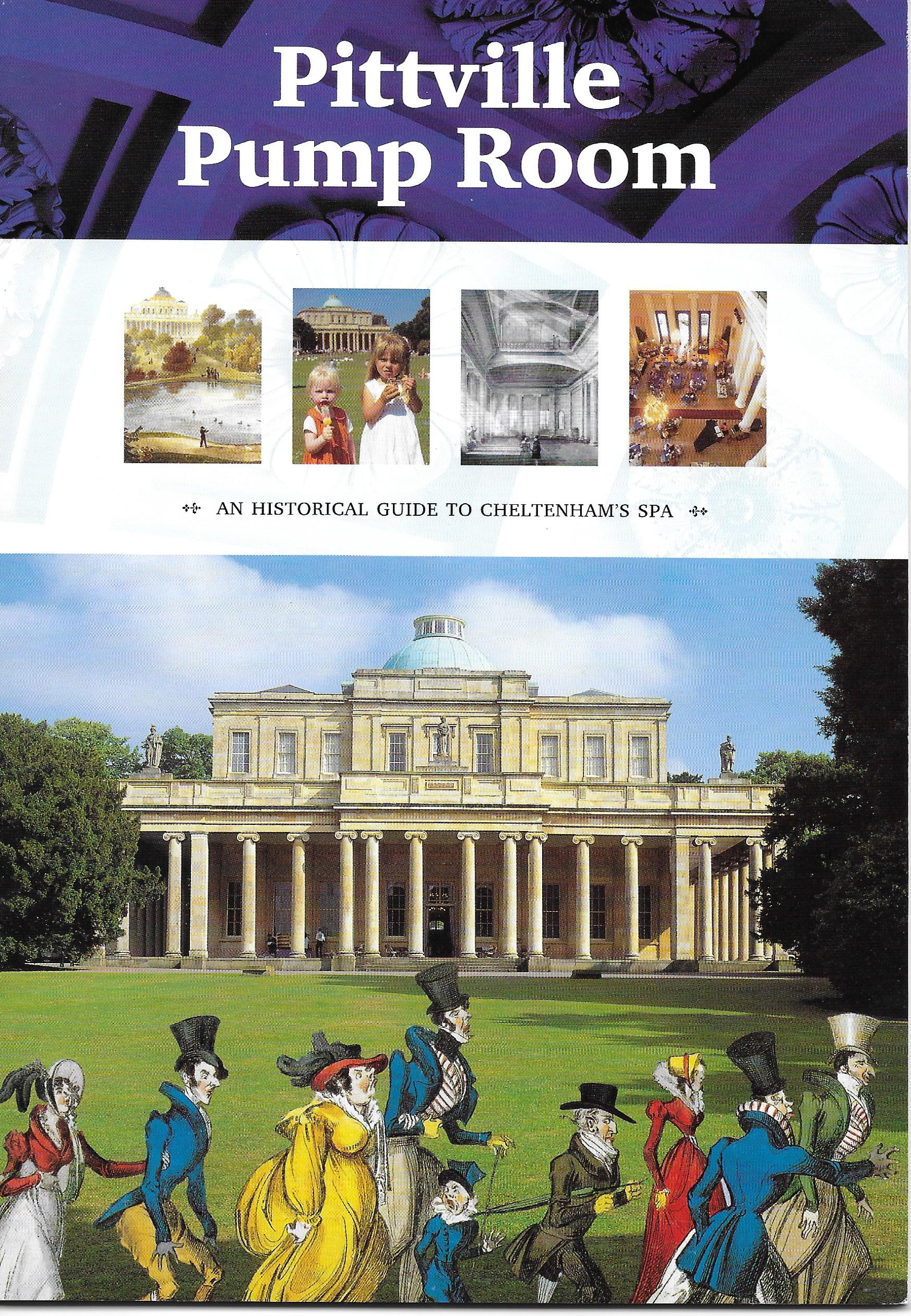 Pittville Pump Room, with figures from an early 19th-century cartoon entitled ‘Effects of Cheltenham waters or tis necessary to quicken your motions after the second glass. Get home as fast as you can’; inset images: Pittville Pump Room, c. 1835; ‘Pittville on Sunday' event; interior of the Pump Room, 1834; a live music event in the Main Hall |
The Pittville Pump Room is one of Cheltenham’s finest ‘Regency’ buildings and was the largest of the town’s spas. Here the medicinal waters were dispensed to visitors, and regular balls, fetes and public breakfasts were held. The grand scale of the building and of its adjoining gardens and estate indicate Cheltenham’s prosperity during the first half of the 1820s, and in particular the confidence and enterprise of Joseph Pitt, the man responsible for laying out the estate and building the Pump Room.
By 1820 Cheltenham had been a spa for over a century. Its medicinal waters were discovered in 1716 in a field to the south of the town, on a site now occupied by Cheltenham Ladies’ College. In 1739-42 the well’s owner, Captain Henry Skillicorne, deepened it, installed a pump and built a brick canopy above it with a small ‘assembly room’ to one side. However, for over 40 years, the Cheltenham spa was of no more than local significance. At the beginning of the 1780s one of George III’s courtiers, Lord Fauconberg, had a house built at Cheltenham, and in the summer of 1788 King George, Queen Charlotte and their daughters came to Cheltenham to ‘take the waters’. Although this was the king’s only visit to Cheltenham, his patronage ensured the spa’s success and during the last years of the 18th century it received an increasing number of visitors, including many from the Court and aristocracy.
One result of the spa’s success was that the fields adjoining the town were acquired by wealthy, enterprising men who were eager to make money by establishing new spa wells and by developing their land for building. One such was Joseph Pitt, whose career epitomises that of the self-made man of the Georgian era. Born to yeoman parents at Little Witcombe in 1759, Pitt is said to have begun his career by ‘holding gentlemen’s horses for a penny; when appearing a sharp lad, an attorney took a fancy to him and bred him to his own business’. This was at Cirencester, where Pitt became a solicitor in 1780. He later invested the profits of his legal business in banking and in the purchase of land. From 1812 to 1831 he was MP for Cricklade, where he owned many houses.
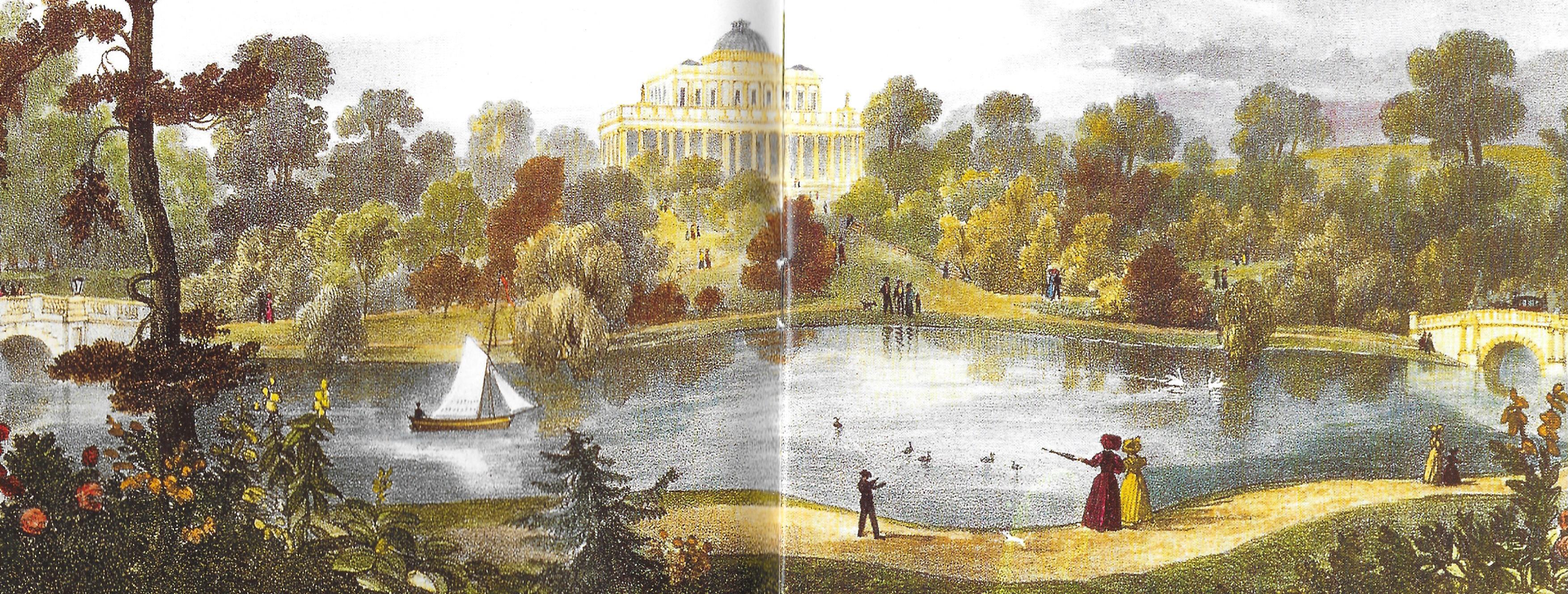 A plan of the proposed Pittville estate, published in 1826 |
In September 1800 Pitt acquired a considerable amount of land on the north side of Cheltenham. These fields were used as farmland until the 1820s, when Pitt decided that the time was right to create his new spa and town of ‘Pittville’. Between 1801 and 1821 the recorded population of Cheltenham had risen from 3,076 to 13,388, and the number of visitors to the spas had increased dramatically. During this period several new spa wells had been opened and the influx of residents and visitors had created a constant demand for houses. England experienced a building boom from 1822 onwards, with apparently unlimited capital available for investment in such grandiose projects as Pitt had envisaged. By 1824 his plans were well underway.
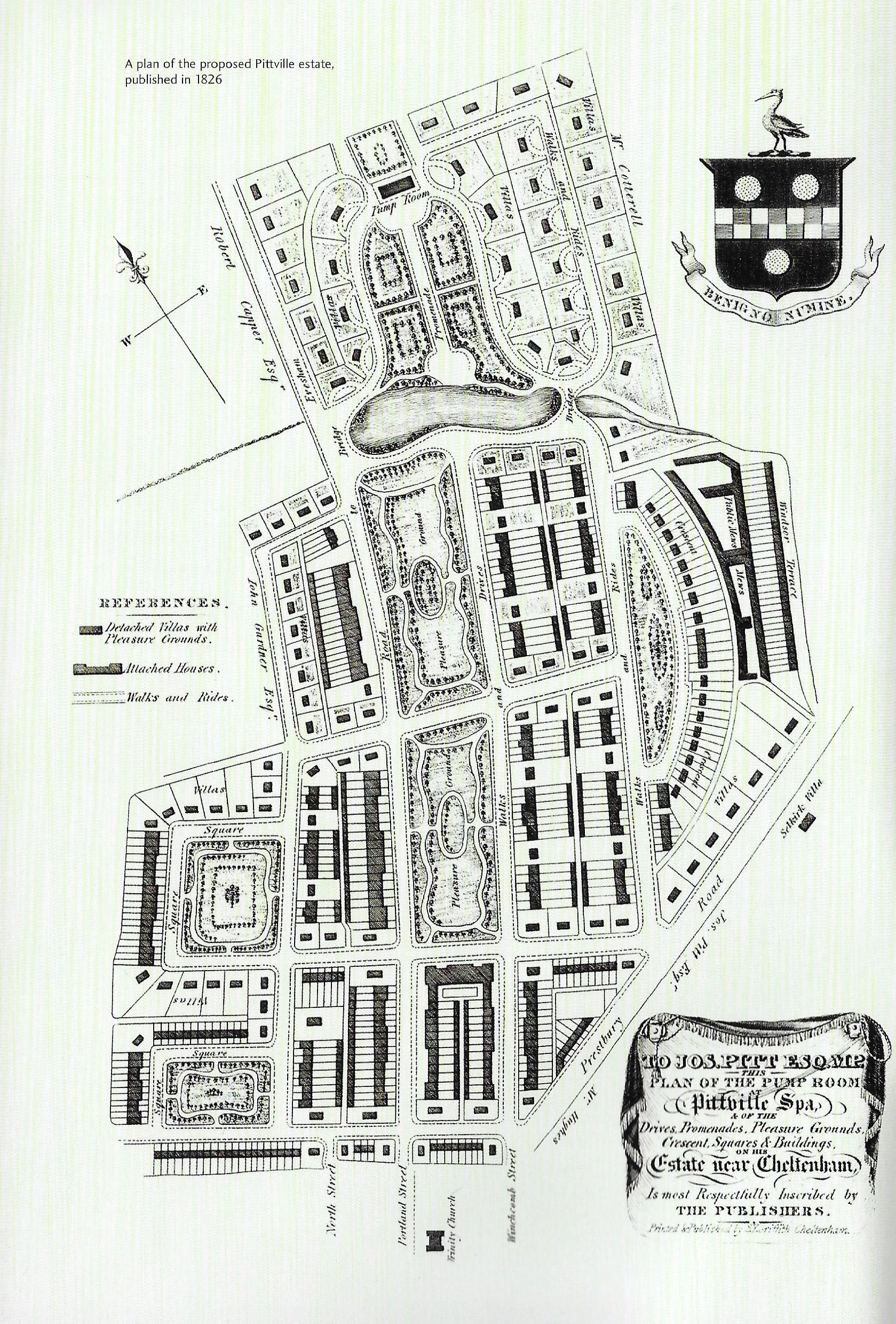
A plan of the proposed Pittville estate, published in 1826
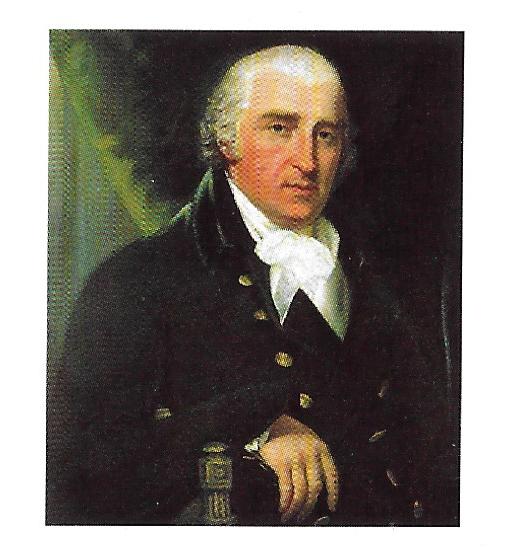 Joseph Pitt, by William Mulready, c. 1820 |
 |
| John Forbes by Richard Dighton, c. 1825. Forbes’ career as an architect came to an abrupt halt in 1835 when he was jailed for forgery |
The laying of the Pump Room’s foundation stone on 4 May 1825 was one of the most splendid events in Cheltenham’s history. In the words of the Cheltenham Journal, ‘the morning was ushered in by the ringing of bells, the firing of cannon and other rejoicing . . . crowds of persons from all the neighbouring villages continued to pour into the town from an early hour’. A Masonic Procession set out from the Masonic Hall in Portland Street, going first to the parish church for a service and then on to Pittville, where ‘two extensive elevations, commanding excellent views of the imposing ceremony’ had been built. Coins were placed in a cavity, over which was set an inscribed plate recording the event. The stone itself was lowered to the strain of ‘God Save the King’. In the evening, banquets were held at two of the town’s hotels, with a grand firework display at Pittville.
John Forbes’ design was for a two-storey building. On its ground floor a large central hall led to the oval Pump Room itself. Here was installed the elaborate marble and scagliola pump from which the Pittville waters were, and still are, available. Beyond the oval room, where the bar is now situated, glass doors opened onto the lawns at the rear of the building. On one side of the oval room was a small card room, now replaced by the modern entrance foyer. Above the main hall a gallery gave access to three more rooms — a billiard room immediately above the oval room, a library, and a reading room. Finally, above the gallery, was the dome, decorated with some of the finest plasterwork in Cheltenham.

The interior of the Pump Room, by John Hance, 1834
Outside, the building was surrounded on three sides by a colonnade of Ionic columns. A print of the intended Pump Room, published in 1826, shows a small central pediment on the front colonnade, although this was never built. In its design, the building combines elements of both Greek and Roman architecture. It was partly inspired by engravings in Stuart and Revett’s Antiquities of Athens (1762), particularly those of the small Temple on the Ilissus at Athens, on which the Ionic columns and cornice of the interior were based. The inspiration for the dome probably came from the Pantheon in Rome. The building of the Pump Room took almost five years. Work seems to have progressed smoothly until mid-1828, although from March 1825 onwards Pitt raised a series of substantial loans in order to finance his work at Pittville. A national banking crisis in December 1825 led to the end of the building boom and a reduction in Pitt’s income from the development of his estate, where house building came to a virtual standstill for several years. Yet despite these difficulties, the Journal was able to report in December 1826 that ‘the roof . . . has lately been completed, with the exception of the dome, which is in a great state of forwardness, and which will be soon altogether covered over with lead’, and that many of the colonnade columns were already in place. Certainly the dome and colonnade were both completed by summer 1827, when three statues by Lucius Gahagan of Bath were placed above the colonnade. These represented the Greek deities Hygeia and Aesculapius, and the physician Hippocrates, often called the "father of medicine". By January 1828 the staircases had been finished and internal decoration was underway, and in July 1828 the Journal stated that ‘the inside of the building is now rapidly verging towards completion, and it is said the whole will be finished and ready for the public accommodation by next May.’
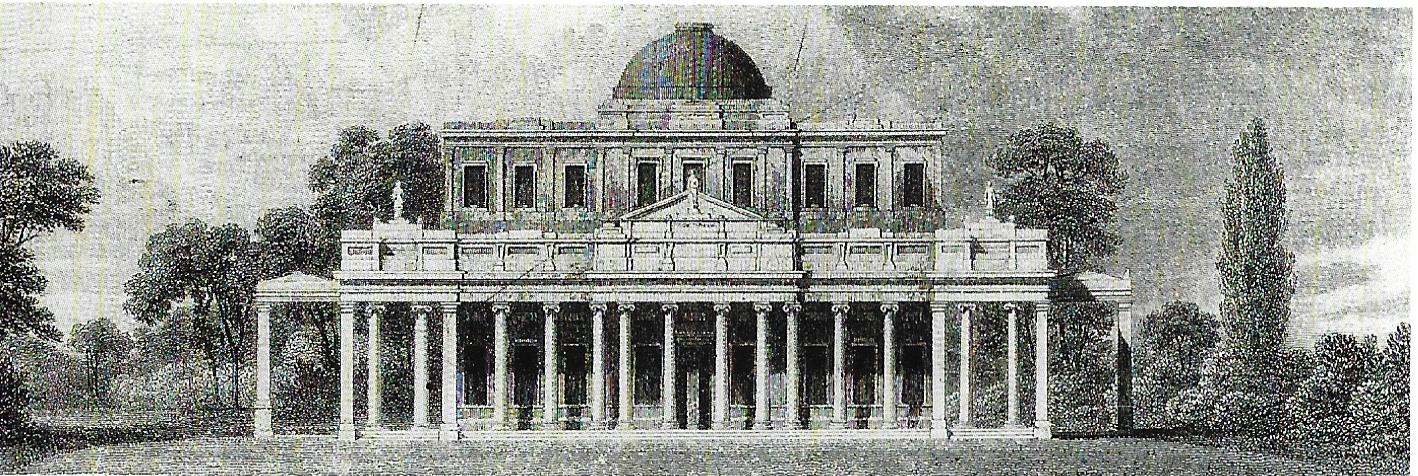
An elevation of the proposed Pump Room, published in 1826. In this early design
the Pump Room has a central pediment to its front colonnade
This optimistic forecast was not fulfilled. Although the delay in the building’s completion may have been partly due to Pitt’s financial problems, other factors were also involved. Although Forbes was initially in sole charge of the building works at the Pump Room, a man named Morris, who in Pitt’s own words was ‘in great personal difficulties’ was subsequently employed at the site. A letter from Pitt to Forbes, dated 1 December 1828, reveals that Morris had been ‘taking on himself perhaps more than I intended, and certainly more than you liked, gave offence to you, and such as to induce you . . . not to attend to the building in the way you had done’. Pitt also notes in his letter that ‘after this it was hinted to me that parts of the building had not been done properly — this I mentioned to you, which led to your sending me a resignation’.
Clearly, Forbes’ own temperament, and his apparent disagreements with Morris (probably Samuel Morris, a builder who had previously worked for Pitt and who was declared bankrupt in 1827) were a problem. Although Forbes may have continued as architect and surveyor of the Pittville estate until 1832, there is no proof that he ever resumed his post as architect of the Pump Room itself. On the contrary, in October 1829 the Journal wrote that ‘we cannot sufficiently praise Mr Meade (sic) the architect, for the very classic designs he has given for the interior of the building’. John Clement Mead, a London architect, certainly designed the elaborate stoves which heated the building, and it is possible that he completed the building in 1829-30, and was responsible for much of its interior decoration.
During its construction the Pump Room aroused considerable public interest. In June 1826, the Journal remarked that ‘already numerous groups may be seen daily frequenting the pleasure grounds of Pittville’, and Pitt encouraged curious visitors who might one day become paying subscribers. Admission to the gardens was allowed free of charge, and from May 1828 onwards the waters were freely available each morning to those who wished to sample them. In 1828 a staircase was constructed whereby ‘an easy ascent is afforded even to the most timid . . . by which they may reach the outside of the dome’. Notable visitors to the site included the Dukes of Gloucester and Wellington. The latter visited Pittville on 15 August 1828 and ‘expressed himself in very high terms as to the beauty of this delightful spot, and the manner in which the property had been laid out’.
The Pump Room’s progress was matched by that of the adjoining gardens, which were laid out by 1827. Between the Pump Room and lake was the broad, gravelled ‘Long Walk’, with trees and shrubs on either side. To the south of the lake, two broad lawns formed the ‘Long Garden’. Here a second well was dug, and a small spa building known as Essex Lodge or the ‘Little Spa’ was built, at which the waters were also available. An ornamental bridge was constructed at each end of the lake. However, some other aspects of Pitt’s original plan never materialised. In July 1828, for instance, the Journal regretted that no more had been heard of a scheme to build two grand entrances to Pittville at the top of Winchcombe and Portland Streets, arguing that ‘a couple of triumphal arches might be erected at a trifling expense’, while nothing more was heard of Pitt’s intention to build a church beyond the Pump Room.
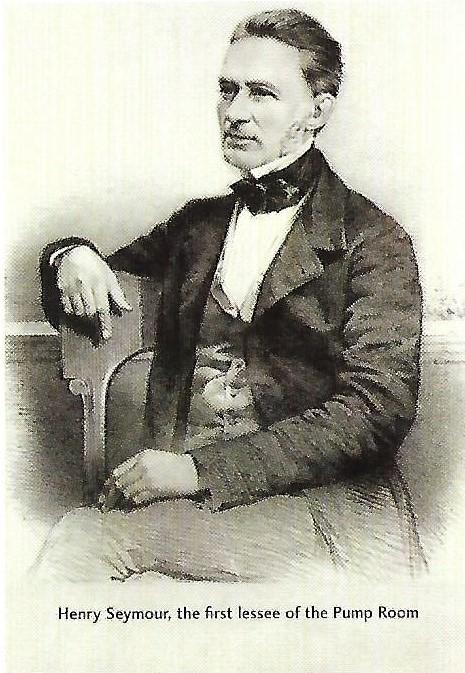
The new Pump Room was to be managed by a lessee, who paid an annual rental to Joseph Pitt, and whose own income would come from the sale of the waters, admission fees to the gardens, and the profits of any events that he organised. In June 1830, shortly before the Pump Room’s completion, Henry Seymour, formerly Master of the Ceremonies at Teignmouth, was appointed as its first lessee, and 6 July was chosen for the official opening, although this was later postponed until 20 July because of the death of King George IV.
On 20 July visitors poured into Cheltenham throughout the morning so that ‘the High Street and approaches to Pittville presented a gay and crowded appearance of carriages and elegantly dressed pedestrians, all flocking to the lively and attractive scene’. At midday the public were admitted to the gardens, where a breakfast was served at 7/6d (37½p) per head to between 1,100 and 1,200 people. Afterwards, a ball was held in the Pump Room. The ‘Assembly Rooms Band’ played from the gallery and the dances included a new quadrille, ‘The Pittville Spa’, composed especially for the occasion. Throughout the afternoon a second band played by the lakeside. The festivities ended at 6pm with ‘God Save the King’. The only discordant note was struck by the Journal, which noted that ‘an expectation was generally entertained that . . . Joseph Pitt or his son . . . would have been present at the Fete . . . but they did not attend’. Although the Journal attributed their absence to ‘a deferential desire that the patronage of the day should exclusively belong to the inhabitants and visitors’, it may indicate that Pitt was already disillusioned with a project which was to bring him near to bankruptcy during the last years of his life. Exactly how much Pittville had cost him is uncertain, although Pitt later claimed to have spent ‘£40,000 and upwards’ on the Pump Room and estate. Certainly, by July 1830, he had raised mortgages of around £18,000 and his debts were to rise still further.
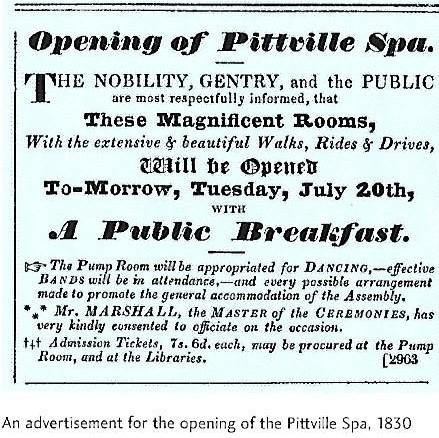
During the years immediately after its opening, the life of the Pittville Spa was divided between its regular daily activities and a series of special events and attractions. During the ‘season’, from May to September, the waters were available each morning, with a band in attendance, and throughout the day the walks, rides and pleasure grounds were available for ‘promenading’, with a band playing most afternoons. Subscribers paid from five shillings for one person to use the walks for a month, to two guineas for a whole family to ‘take the waters’ for the entire season; non-subscribers were admitted for one shilling. Special events, for which a separate charge was made, were held to mark such occasions as the Monarch’s birthday or the first day of the races. These took the form of either a public breakfast, followed by a ball, or an evening gala fete with a concert and firework display. Two or three such events took place each year between 1830 and 1840, and again in 1843-52, although no less than six were held during 1836, which prompted the Journal to remark that the lessee ‘suffers no occasion of national rejoicing to pass by unnoticed or uncommemorated’.
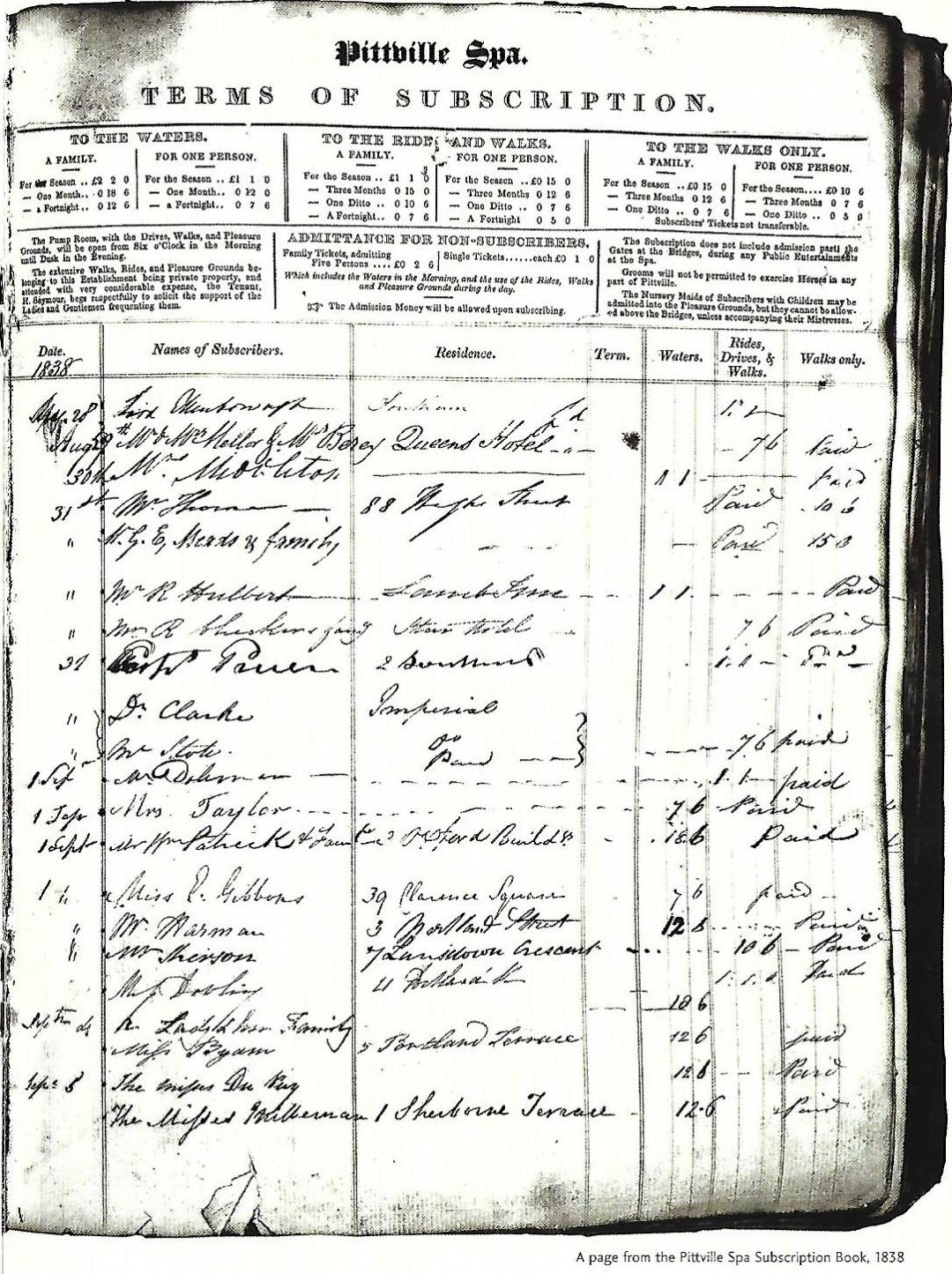 (Gloucestershire Archives D5130 Accession 11324) |
In its earliest days, the new spa seemed destined for success. In July 1830 the Journal noted ‘the promptitude with which the names of the most influential personages among the distinguished society of Cheltenham were entered in the subscription book’, and in August that the walks were ‘daily graced by crowds of fashionable visitors’. Soon, however, it became clear that Pittville was at a disadvantage when compared to the town’s other spas. As early as 1832, Henry Davies wrote in his Stranger’s Guide to Cheltenham that ‘its distance from the town very much interferes with its success, as indeed it ever must do, until fashion. . . shall be able to divert the current of patronage from the southern to the northern side of the High Street’. In fact, the prominence of the spas to the south of High Street was increasing steadily, particularly with the uniting of the Imperial and Montpellier Spas under a single management in 1831, the building of the Queen’s Hotel in 1837-8, and the development of the Promenade as the town’s most fashionable thoroughfare. Pittville’s isolation was further increased by the comparative failure of the Pittville building estate; of the 500 or more houses planned only a handful were completed by 1830, and barely 200 by 1850. Finally, the popularity of spas in general was declining, so that Pittville had to struggle to secure its share of an already shrinking market.
From 1835 onwards Henry Seymour made several innovations that were designed to increase Pittville’s appeal. In 1835 he helped to establish the Pittville Horticultural Association, which held five shows a year at the Pump Room between 1836 and 1840, when it was united with the Cheltenham Horticultural and Floral Society. Thereafter, three of the united Society’s annual shows were held at Pittville, and as the century wore on, the flower shows became a mainstay of Pittville’s calendar of events.
Between 1837 and 1840 a number of ‘special attractions’ were included in the breakfasts and fetes. Among them were Mr Blackmore, a tightrope walker, who crossed Pittville Lake 40 feet above the surface of the water; Madame Rosini, who undertook ‘an ascent and descent upon an inclined rope to the height of fifty feet amidst brilliant fireworks, coloured lights etc.’ and the Boleno family ‘who astonished fashionable audiences by their wonderful athletic feats, their beautiful groupings and their irresistibly comic dances’. Perhaps most exotic of all was Van Amburgh’s Menagerie, which included, on one occasion, ‘a novel exhibition of his stupendous elephant swimming in the Pittville Lake’. A series of morning concerts, with singers, was instituted in 1838, and in 1840 one of the upper rooms at the Pump Room was fitted out with a series of ‘Cosmoramic Views’ showing European cities and monuments. In 1839 a vital trend was begun when the Pump Room and gardens were leased out for a private function for the first time, to the annual tea party of the Cheltenham Temperance Club, and in the coming years Pittville was used for events ranging from temperance rallies to political banquets.
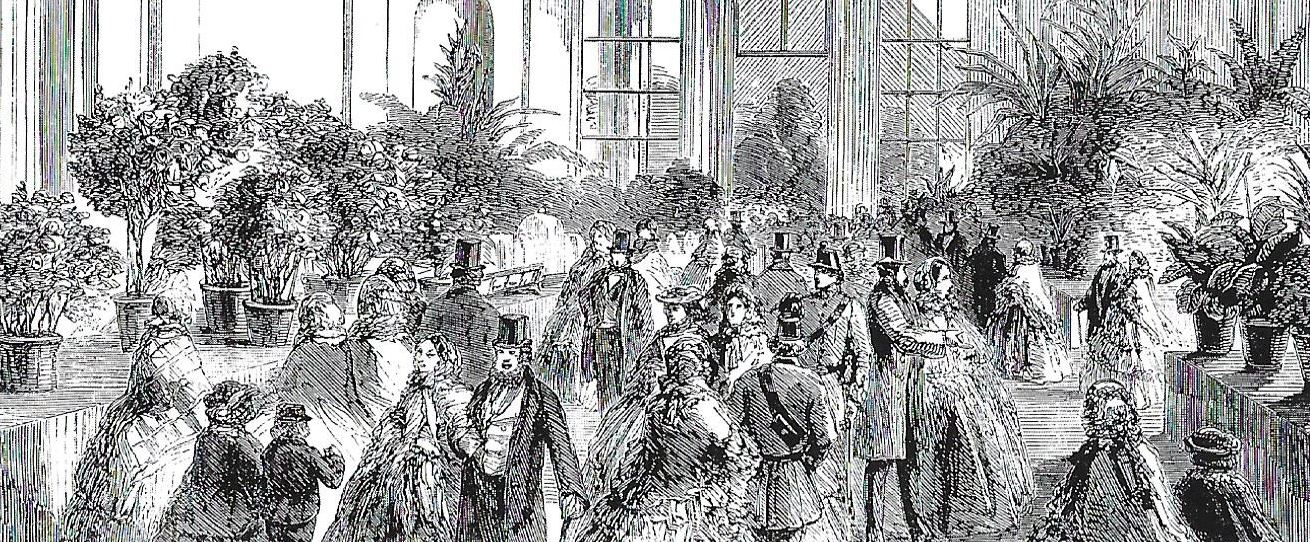
A flower show at the Pump Room, 1860
(Gloucestershire Archives PX5.7GS)
How far Seymour’s efforts were successful is uncertain, although it is clear that the spa entered a period of comparative inactivity after 1840. Not a single fete or ball appears to have been held there in 1841-2 and in November 1841 Seymour gave up his lease and emigrated to New Zealand. His successor, Charles Wickes, made a slow start, and, in announcing the first gala for almost three years in July 1843, the Cheltenham Examiner remarked that ‘it is so long since we have seen Pittville the scene of any amusement beyond the usual routine of afternoon promenades and the alternate holding of the exhibition of the Horticultural Society.’ Under Wickes the pattern of events continued much as it had done during the previous decade, except that public breakfasts were wholly replaced by fetes, with an emphasis on music. It was also at about this time that the use of the lake increased, for fishing and boating in the summer and for skating in the winter. Nevertheless, Pittville continued to lose popularity and in 1852 when the lease was taken by a group of ‘respectable tradespeople’ it was hoped that they would ‘revive some portion at least of those summer amusements which were formerly such important attractions to visitors’. However, although by no means deserted, Pittville failed to experience a renaissance under the guidance of the tradespeople or of their successors, John Buckman (1858-71) and Messrs McAlpine and Bretherton (1871-87).
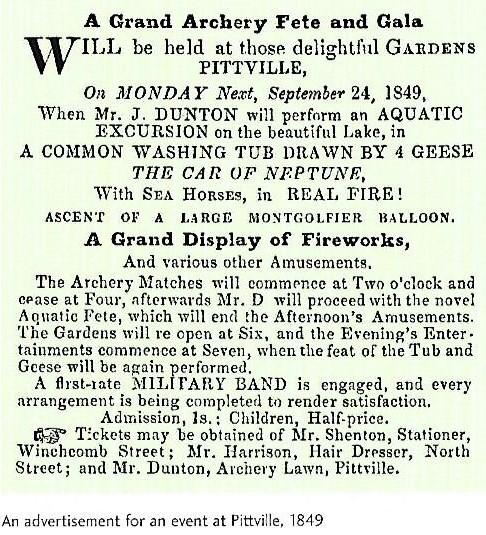 Clearly, neither the spa nor the building estate was more than a partial success, and Joseph Pitt’s own income from them was far less than he had hoped. During the last years of his life he sank deeper into debt, and by his death in February 1842 he owed his creditors almost £150,000. Thereafter his estate was administered by the Court of Chancery and virtually all his property was sold during the following years. Eventually, all that remained was the Pump Room and gardens, and a single outstanding debt of £10,800, due to the County of Gloucester Bank. In March 1888 the Bank offered to accept £5,400 if Cheltenham Borough Council would agree to purchase and preserve the Pump Room and gardens. At Christmas 1890 the spa’s last lessee, Edward Shenton, gave up his lease and the Pittville Spa passed into the hands of the Council. Their purchase did not include the Spa’s fixtures and fittings, and Shenton’s sale of these in March 1891 gives an insight into the attractions of the place during its last years as a private concern. They included swans, ducks and a monkey, garden seats, animal pens, ‘a goat-house on wheels’, several boats, an ornamental fountain ‘on gilt dolphin supports’, three automatic working models with penny slots, the Cosmoramic Views and a boa constrictor in a glass case!
Clearly, neither the spa nor the building estate was more than a partial success, and Joseph Pitt’s own income from them was far less than he had hoped. During the last years of his life he sank deeper into debt, and by his death in February 1842 he owed his creditors almost £150,000. Thereafter his estate was administered by the Court of Chancery and virtually all his property was sold during the following years. Eventually, all that remained was the Pump Room and gardens, and a single outstanding debt of £10,800, due to the County of Gloucester Bank. In March 1888 the Bank offered to accept £5,400 if Cheltenham Borough Council would agree to purchase and preserve the Pump Room and gardens. At Christmas 1890 the spa’s last lessee, Edward Shenton, gave up his lease and the Pittville Spa passed into the hands of the Council. Their purchase did not include the Spa’s fixtures and fittings, and Shenton’s sale of these in March 1891 gives an insight into the attractions of the place during its last years as a private concern. They included swans, ducks and a monkey, garden seats, animal pens, ‘a goat-house on wheels’, several boats, an ornamental fountain ‘on gilt dolphin supports’, three automatic working models with penny slots, the Cosmoramic Views and a boa constrictor in a glass case!
Although the ownership of Pittville changed in 1890, many aspects of its life continued as before. Apart from Sunday afternoons, a charge was still made for admission to the gardens, and at all times for the waters, which were still available at the Pump Room, at Essex Lodge and at the present wooden refreshment chalet which replaced Essex Lodge in 1903.
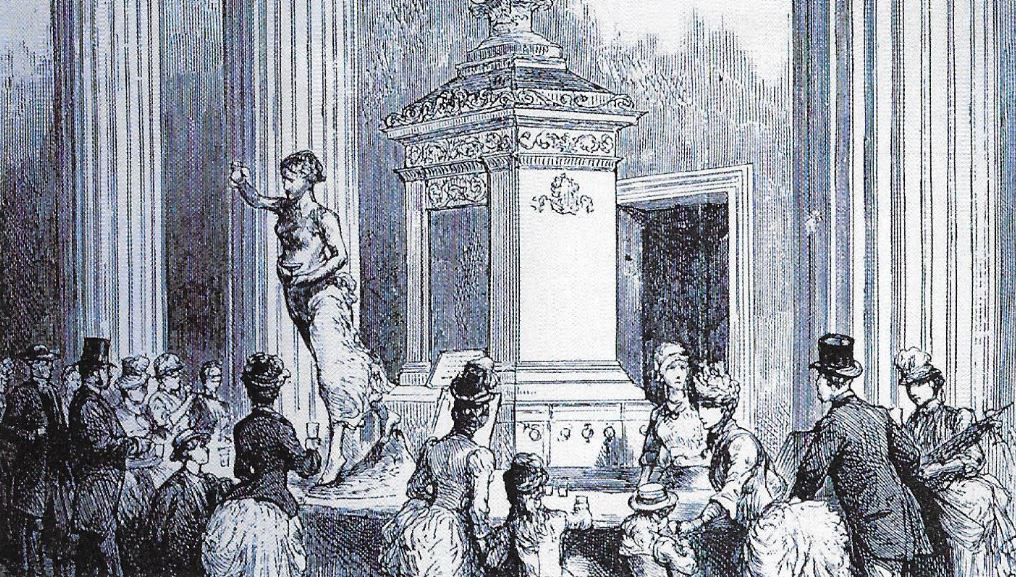
Visitors by the Pump, c. 1900
Admission charges to the gardens were not finally abolished until 1954. A band played in the gardens several times a week in the summer, the lake continued to be used for boating, fishing and skating, and the Pump Room and gardens were still used for a wide range of public and private events. However, the nature of these events began to change considerably at the end of the century. The horticultural shows ceased and the Pump Room was increasingly used by badminton, roller skating and tennis clubs, particularly in the 1920s and 30s.
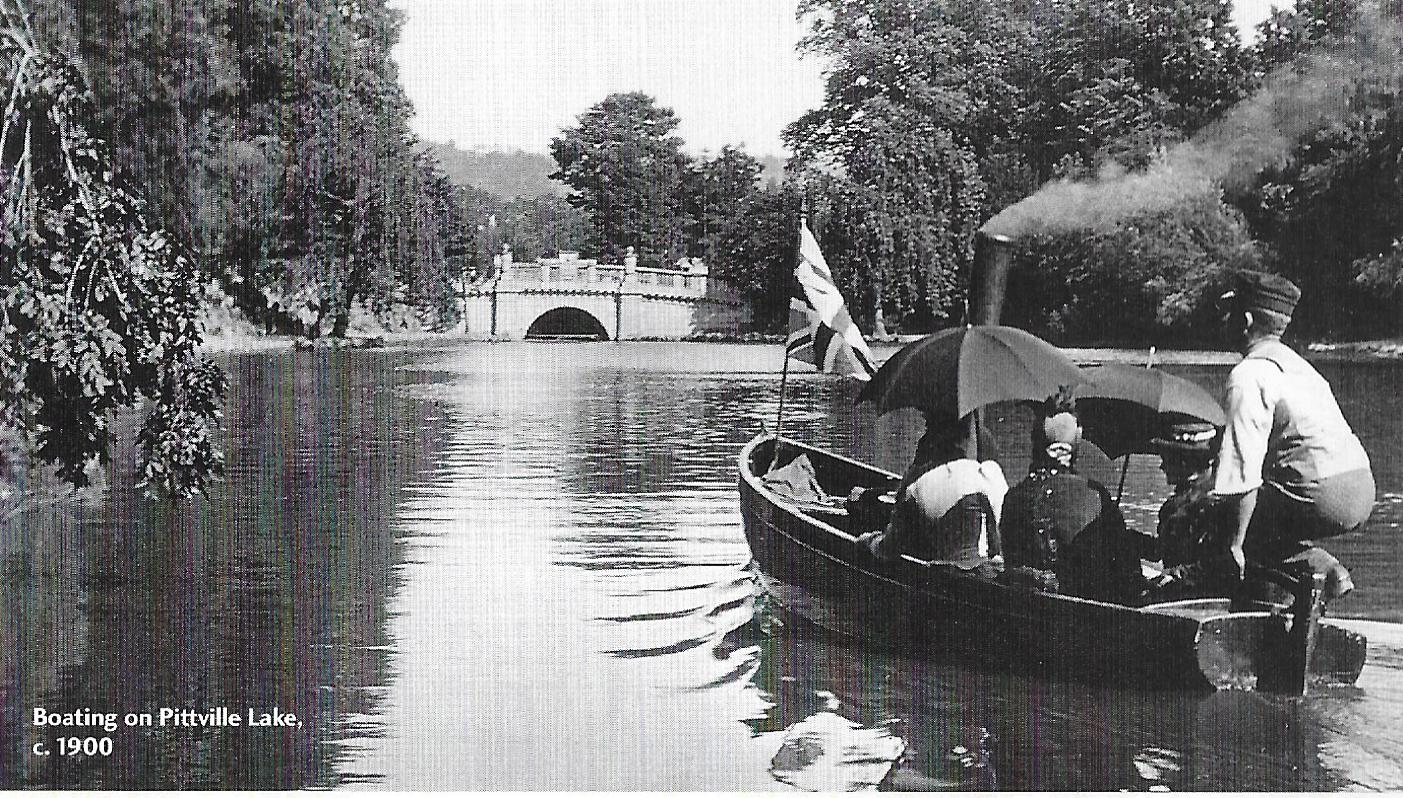
Tennis courts were established in Pittville Crescent Garden and Clarence and Wellington Squares, and the lake was used for swimming and water polo. Among the more important annual events during the early 20th century were the Bank Holiday fetes, the Mayor’s summer tea party and the West of England Ladies’ Kennel Society shows.
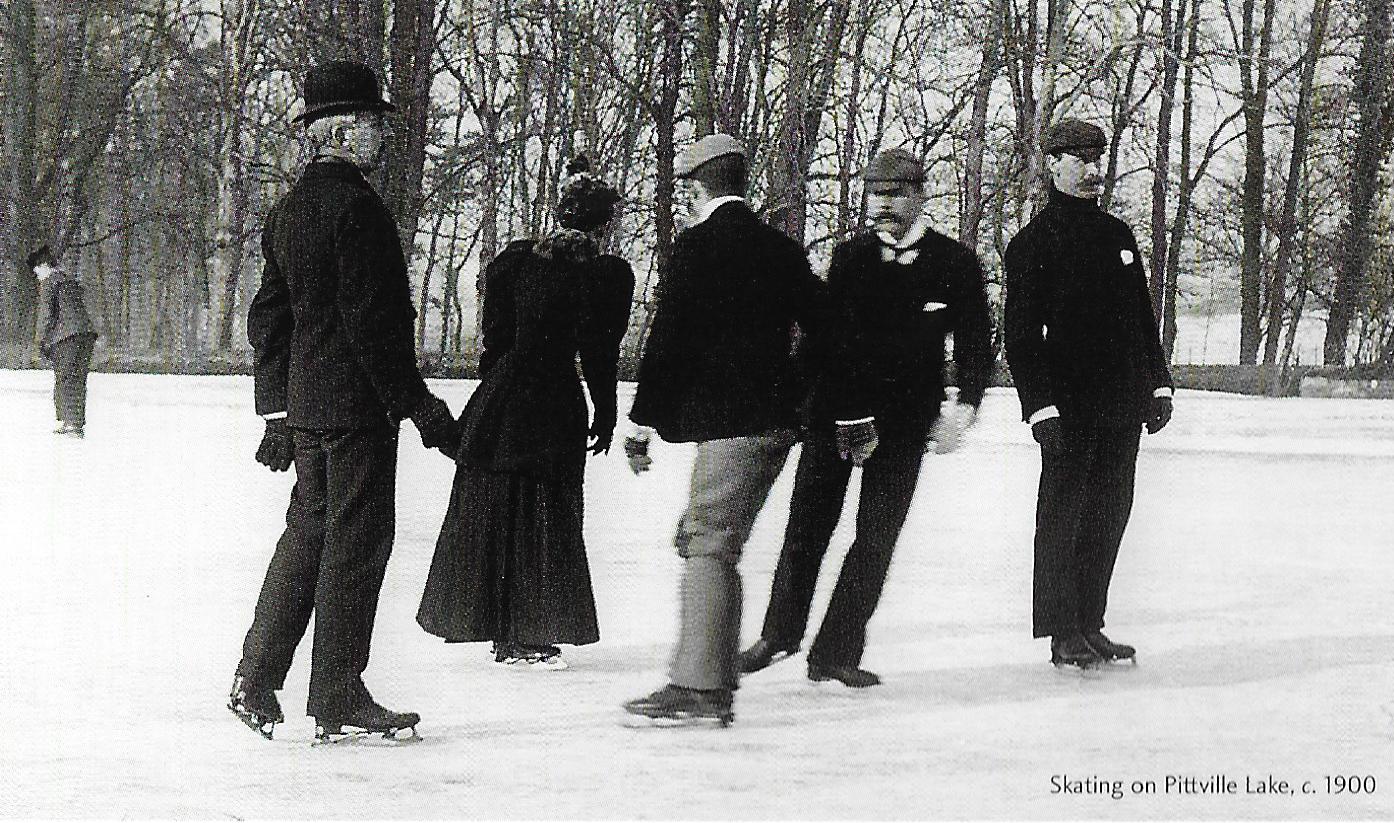
After 1890 the Pump Room suffered increasing structural problems. A constant need for restoration work culminated in a major programme of works in 1937-9, involving the treatment of infested timbers, the replacement of decayed stonework, and the reconstruction of the colonnade roof, including the removal of Gahagan’s badly eroded statues. Further work was interrupted by the Second World War, and by the requisitioning of the Pump Room and of part of the gardens for military use in 1940.
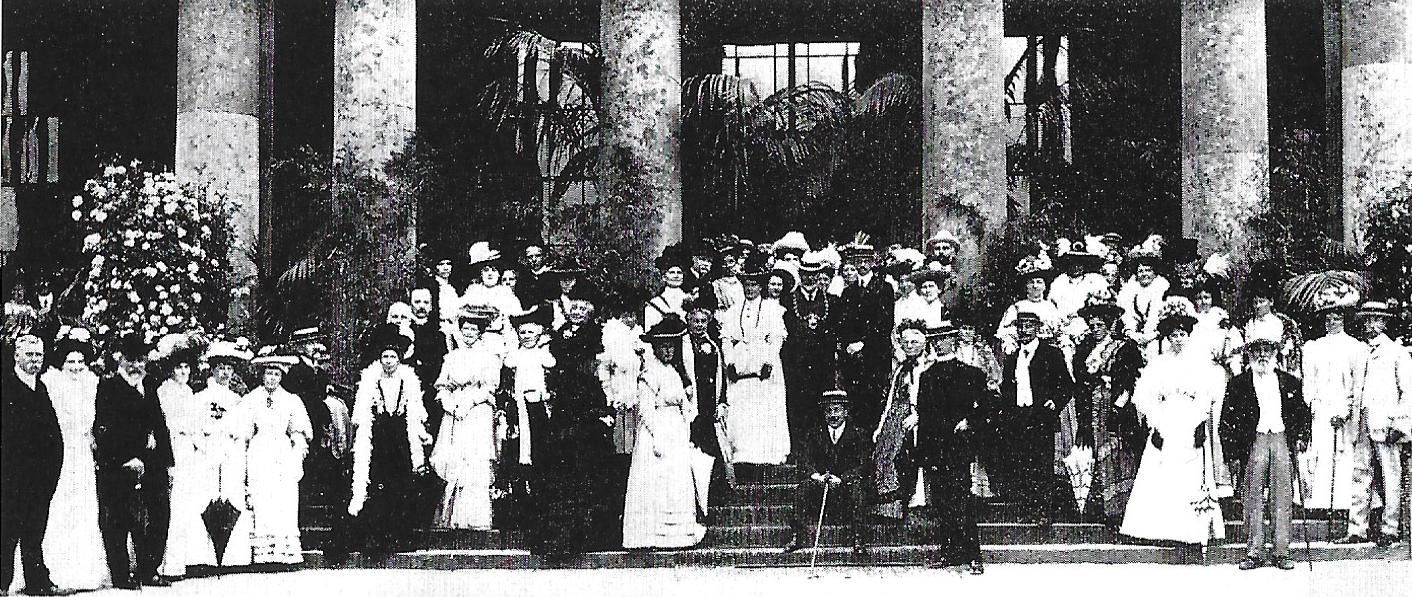
The Mayor’s Garden Party at Pittville, 1908
During the war the ground floor was used as a food store and the upper floor to house American servicemen. To increase the available storage space, parts of the colonnade were bricked up and some of its columns were damaged by vehicles unloading supplies. More serious, however, was the building’s continued structural decay, in particular the dry rot spreading unchecked through its timbers and brickwork. In 1946, when the Pump Room was de-requisitioned, the Borough Council was faced with the dual tasks of saving the building for posterity and of finding for it some viable future use.
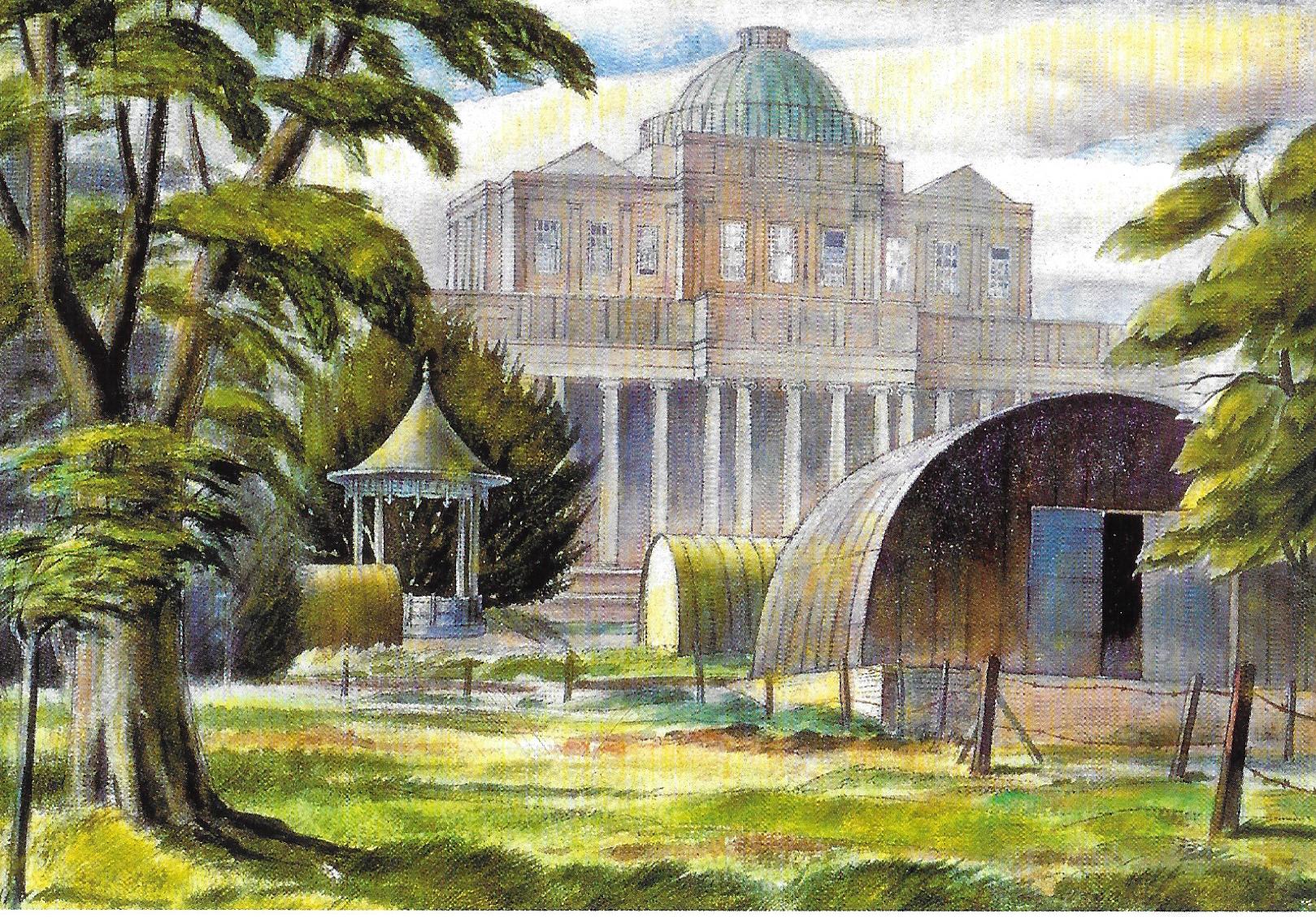
Pittville at War: Nissen huts in front of the Pump Room, by William Gaydon, c. 1940
The major period of restoration began in 1949 and culminated in its official re-opening by the Duke of Wellington on 4 July 1960. During these years £43,250 was spent on the total restoration and redecoration of the building, and on the provision of a modern heating and lighting system, and catering facilities. Substantial grants were received from the Ministry of Works (acting on advice from the Historic Buildings Council) and the Pilgrim Trust. Private donations were also received, notably from Councillor Miss E. K. Bayliss, whose gift of £1,000 in 1952 launched a fruitful public appeal, and Mr L. G. Northcroft, who donated three chandeliers and a new wooden floor for the main hall in 1960.
Much valuable advice was received from the Gloucestershire Architectural Association, one of whose members, Robert W. Paterson ARIBA, acted as architect throughout the building’s restoration. Since 1960 further structural improvements have taken place, along with a considerable enlargement to the building’s catering, bar and storage facilities. In 1965 the original statues of Hygeia, Aesculapius, and Hippocrates above the colonnade were replaced by new versions sculpted by Patrick Conoley in the workshops of Messrs R. L. Boulton and Sons of Cheltenham, the new statues being entirely financed by private donations.
From 1983 the upper floor housed a museum of costume and local history. After the passing of the Marriage Act in 1994 the Pump Room became an approved location for weddings, and this is now a major source of its income. The costume museum closed in 1999 and the upper rooms reverted to being available for general hire. At the same time the building’s use as a concert hall has increased with the growth of the Cheltenham Music Festival. The Cheltenham Trust took over the management of the Pump Room in 2014 under an agreement with Cheltenham Borough Council. It continues to be open for the public to visit and to taste the spa water, which is pumped from a well 24 metres (80 feet) below, though now the water is drawn electrically. A Grade I listed building, the Pump Room is of national importance as Cheltenham’s last surviving spa, and of local significance as a busy social and cultural venue and an enduring testament to the original vision of Joseph Pitt. For further information about current opening times see here.
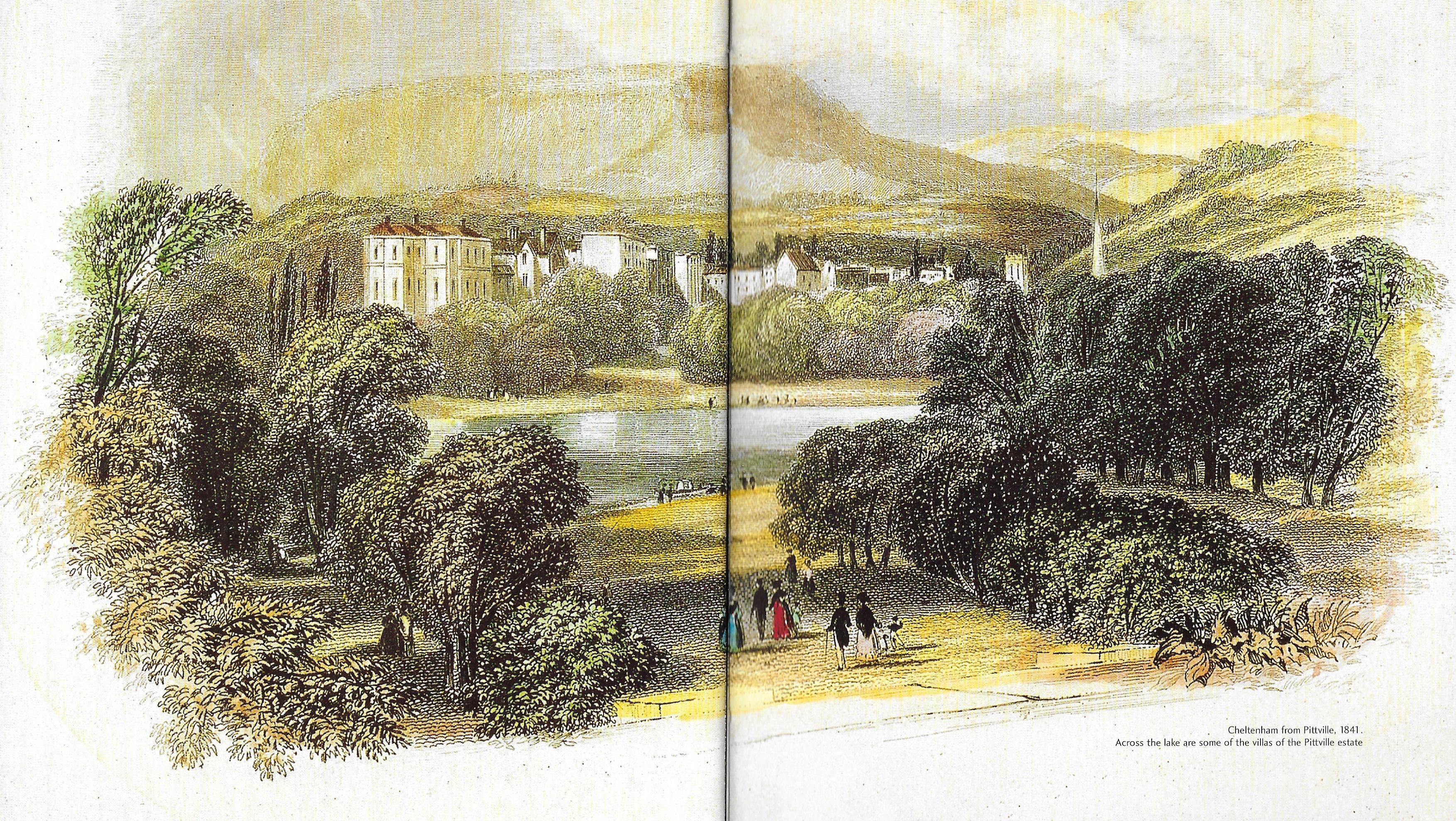
First published by Cheltenham Borough Council, July 1980
Second, revised edition, May 2000. Further minor revisions, 2019
Text by Dr Steven Blake
This publication has been included on the Pittville History Works website by permission of Cheltenham Borough Council. Permission to include illustrations in the original publication were given by the following: Cheltenham Local & Family History Library ("An advertisement for the opening of the Pittville Spa, 1830", "An advertisement for an event at Pittville, 1849", "The Mayor's Garden Party at Pittville, 1908", and "Visitors at Pittville, 1875"), Gloucestershire Archives ("A page from the Pittville Spa Subscription Book, 1838", "A flower show at the Pump Room, 1860"), Rickerby Watterson, solicitors ("John Forbes, by Richard Dighton"), Alison Mildon-Ross ("Henry Seymour, the first lessee of the Pump Room"). All other images are the property of Cheltenham Borough Council, in the care of The Cheltenham Trust/Wilson Art Gallery & Museum.
Print editions designed and produced by Art Works, Cheltenham. Tel: 01242 572559
ISBN 1 901153 O2 9
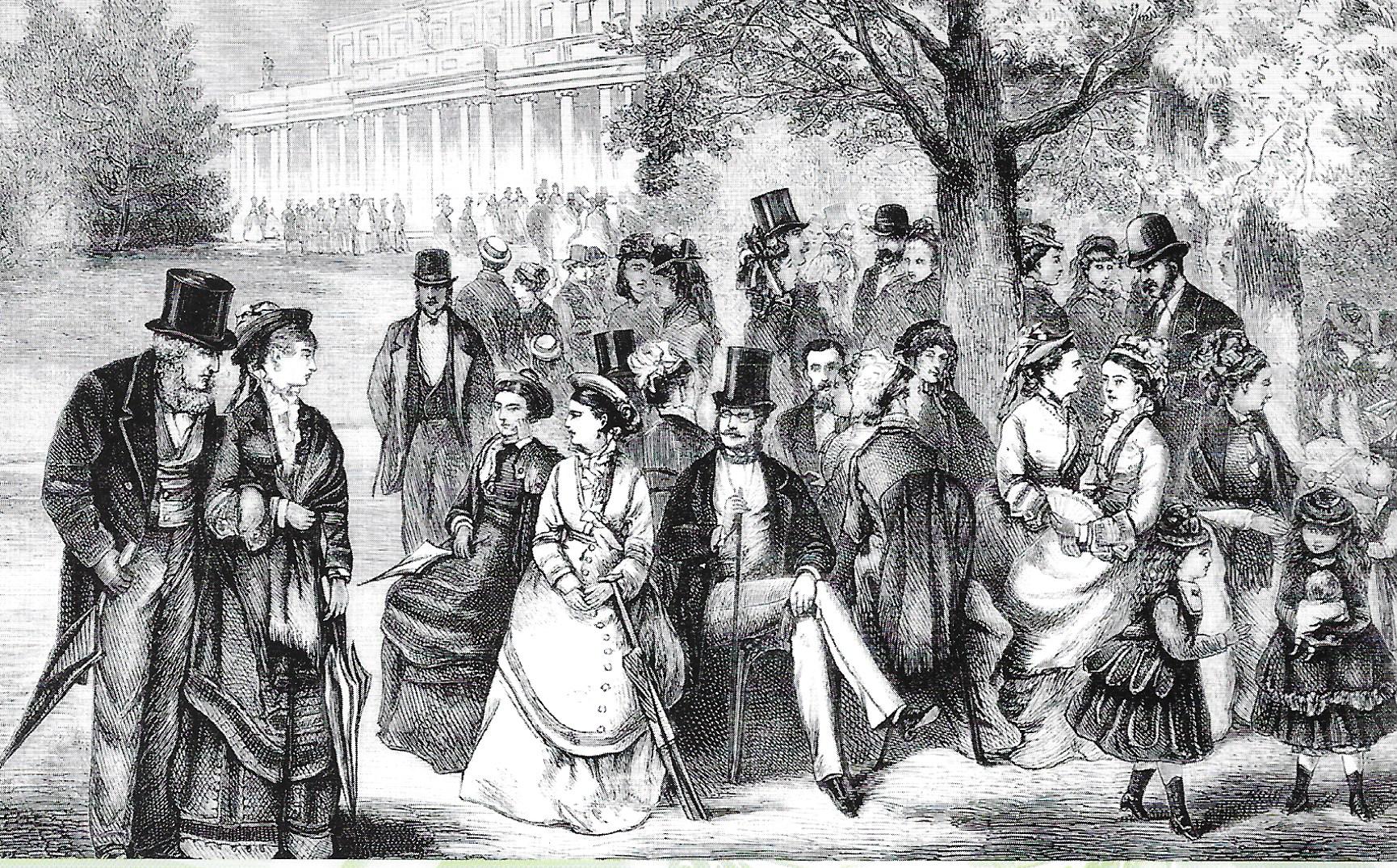
Visitors at Pittville, 1875